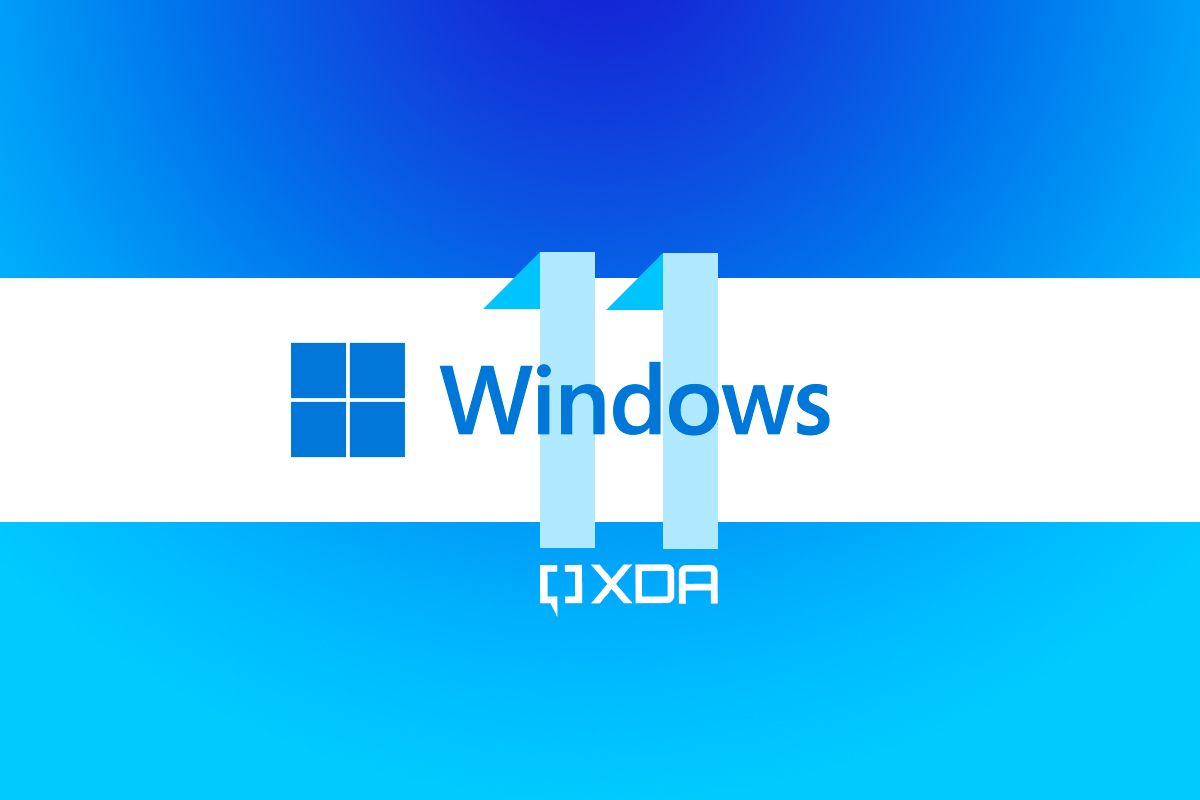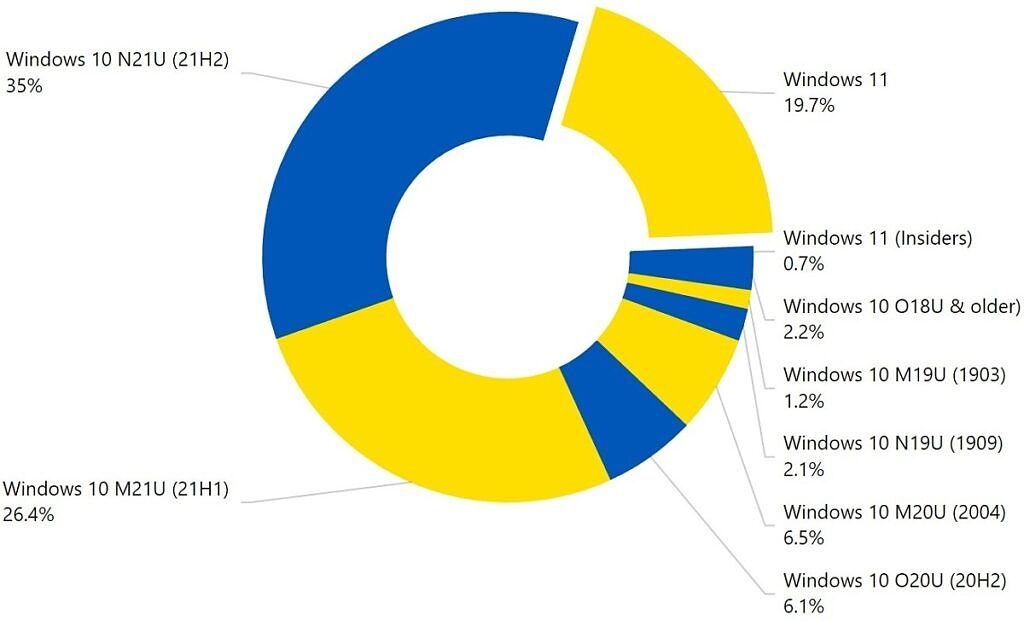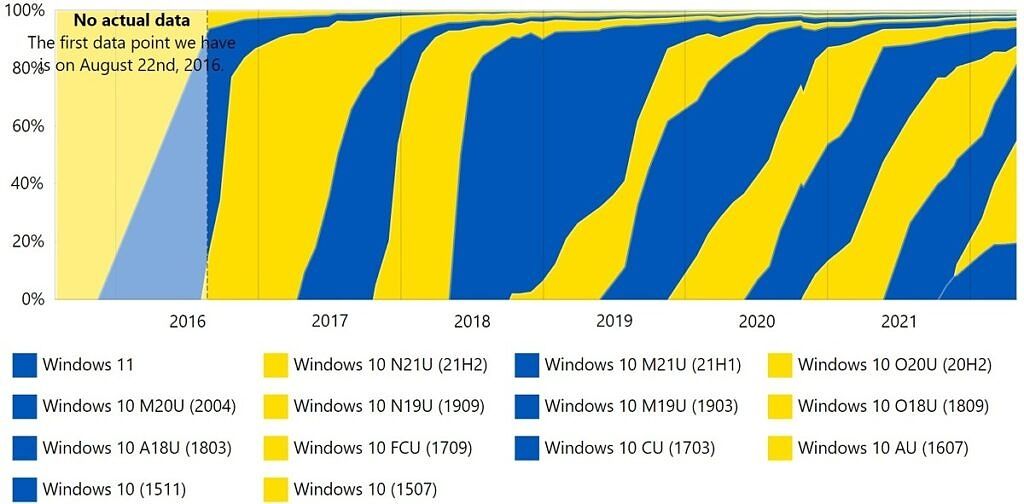AdDuplex has released its monthly usage share report for modern Windows versions, and it shows that Windows 11 is still growing, albeit at a relatively slow pace. Microsoft's newest operating system is still in third place, but it grew to 23.1% usage share among all Windows 10 and 11 versions. That's the first time it breaks past 20% usage share, after being stuck in the 19% range since the February report.
That still leaves it behind the two most recent versions of Windows 10 - version 21H2 and 21H1. Windows 10 version 21H2 is still the most used, and it actually grew a bit more in June, reaching 38.2% share, up from 35% in April, which is when the previous report was released. That growth is balanced out by a drop in usage of Windows 1o version 21H2, which fell from 26.4% to 23.9% over the past two months, just barely holding onto second place.
Older versions of Windows 10 also dropped significantly. Version 20H2 is down to 3.8% (6.1% in April), version 2004 is at 5.2% (instead of 6.5%), and older versions saw residual drops. The percentage of Windows Insiders moved slightly from 0.7% to 0.8%, potentially due to Windows 11 version 22H2 making its way to the Beta and Release Preview channels.
Looking at the history chart, you can definitely see that Windows 11 adoption has hit a bit of a stall compared to previous Windows updates since Windows 10 was introduced. While it's still technically growing, it's slower than most Windows versions have been at this point in their lifecycle.
That's likely because of the system requirements for Windows 11, which are much higher than what Windows 10 required. There are a lot of Windows 10 devices that can't upgrade to Windows 11 using regular methods, which means its usage share will be limited until people buy newer PCs with Windows 11.
As per usual, this data is gathered by apps using the AdDuplex SDK v2, which is an advertising framework for apps on the Microsoft Store. That means the sample size is relatively small, albeit the report doesn't disclose exactly how many devices were surveyed. The latest reports before this had a sample size of around 60,000 PCs, which is certainly a tiny fraction of all Windows PCs. Still these trends give us some idea of how popular Windows releases are.
Source: AdDuplex



